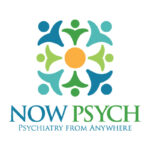Causes of Obsessive-Compulsive Disorder in Children
Obsessive-compulsive disorder (OCD) presents in childhood or adolescence in about 50% of all cases. It is a disorder that his known to cluster in families and have a strong genetic component. It is estimated that about 1 to 3% of the population in the United States (about 3 million people) have OCD. The typical age of onset is between 9-11 years in males and 11-13 years in girls. In children, OCD more commonly occurs in males whereas in adults the ratio is closer to 1:1. More than half of all patients with OCD have another psychiatric disorder with ADHD, anxiety and a tic disorder being quite common.
There are many factors we will discuss including:
- Genetic component of Obsessive-compulsive disorder (OCD)
- Autoimmune and immune connections
- Birth injuries that can be related
- Areas of the Brain affected in OCD
Genetic Contributions to Obsessive-compulsive disorder (OCD)
Multiple risk factors are thought to contribute to the development of OCD. Genetic studies have found multiple chromosomes thought to be involved including: a glutamate transporter SLC1A1 on chromosome 9 and the glutamate receptor gene GRIN2B.
Possible Immune contribution to Obsessive-compulsive disorder
Autoimmune causes of OCD have also been studied and are related to group A beta-hemolytic streptococcus (Group A strep or GAS). Autoimmune cases are also called Pediatric autoimmune neuropsychiatric disorder associated with group A streptococci or PANDAS. PANDAS and the association with group A strep is controversial and the diagnosis is made by pairing the onset of OCD with a systemic illness.
Birth Injury Ties to Obsessive-compulsive disorder
People (especially males) who have had some birth injury appear to have a greater risk to develop OCD. Exposure to drugs, particularly to nicotine, has also been associated with OCD and Tourette’s syndrome. Alcohol and caffeine have also been associated with an increased risk as has the use of forceps during delivery and multiple other birth complications.
Brain areas affected in OCD
Apart from the known contributing factors, structural imaging in people with OCD has shown an abnormal functioning of the cortico-striatal-thalamic networks in the brain. People with OCD are much more likely to have reduced striatal grey matter as well as increased anterior cingulate cortex grey matter. Multiple other areas of the brain have been implicated using advanced imaging studies. Serotonin and its metabolites have been long known to change the signaling and thus improve symptoms in patients with OCD.
Summary
Outside of a research center that will check your DNA or check for GAS markers, the most important known contributions to obsessive compulsive disorder in children (OCD) are a family history and birth injury or exposure to toxic substances in utero.
If you suspect that you or your loved one or child may have OCD, you can schedule with a board certified Pyschiatrist for an evaluation.






